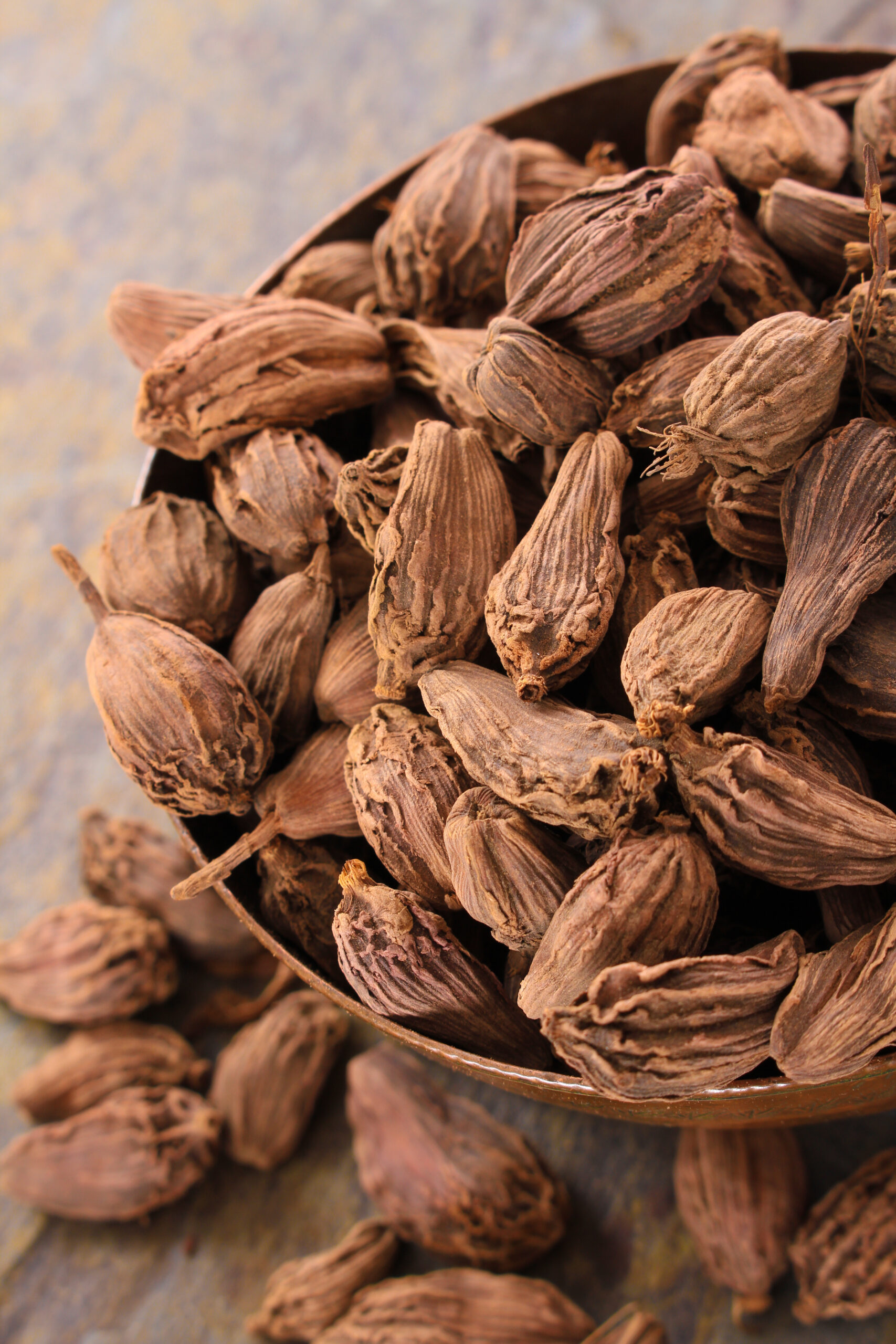
Introduction
Black cardamom doesn’t get the same attention as green cardamom, but it has a character all its own. Larger, darker, and dried over open flames, the pods carry a deep, smoky flavor that stands out in slow-cooked dishes, curries, and broths.
It’s bold, aromatic, and not something you’d reach for in desserts — instead, it shines in savory cooking where its intensity has time to mellow and infuse.
What Exactly Is Black Cardamom?
Black cardamom comes from the plant Amomum subulatum, part of the ginger family. It’s not just a darker version of green cardamom but a different spice altogether.
Grown mainly in India, Nepal, and Bhutan, the pods are dried over fire, which gives them their distinct smoky flavor. They’re large, rough, and filled with sticky black seeds that deliver a resinous, slightly camphor-like aroma. In South Asia, they’re often called badi elaichi — “big cardamom.”
Quick Facts About Black Cardamom
- Flavor: Smoky, earthy, slightly menthol-like
- Best in: Curries, stews, rice dishes, pho, spice blends
- Not for: Desserts (use green cardamom instead)
- Substitutes: Smoked paprika + green cardamom, cloves, star anise
- Storage: Whole pods in an airtight jar, cool and dark; keeps up to 1 year
Drying Process of Black Cardamom
Unlike green cardamom, which is sun-dried to preserve its delicate sweetness, black cardamom is dried over open flames or hot coals. This method infuses the pods with a smoky aroma that penetrates the seeds inside.
The result is a spice that’s earthy, robust, and unmistakably different in both taste and cooking behavior.

Popular Forms You’ll Find It In
-
Whole pods: The most common form. Added whole to curries, rice, or soups, then removed before serving. Slightly crushing the pods releases more flavor.
-
Ground spice: Less common, but useful in rubs and marinades. Use sparingly, as the flavor is strong.
-
In spice mixes: Often included in garam masala and other blends meant for long, slow cooking.
Flavor Profile
Black cardamom has a bold, smoky, and earthy flavor with notes of resin and menthol. It’s strong, warming, and adds depth to savory dishes.
Where green cardamom is floral and sweet, black cardamom is robust and savory. Its aroma is reminiscent of a wood fire mixed with herbal undertones. A little goes a long way, and it works best in dishes that can balance its strength.
Culinary Uses Around the World
-
South Asia: Found in curries, rice dishes, lentils, and spice blends like garam masala.
-
Vietnam: Adds smoky depth to pho broth.
-
Middle East and Central Asia: Used in rice dishes, meat marinades, and hearty soups.
Wherever it’s used, the rule is simple: one or two pods are usually enough.
Cooking With Black Cardamom
-
Add whole pods to stews, soups, or braises. Remove before serving.
-
Slightly crush or toast the pods before cooking to unlock more aroma.
-
Use early in the cooking process so the flavor can mellow.
-
Pair with warming spices like cloves, cinnamon, and black pepper.
-
Avoid desserts — green cardamom is better suited there.
Black Cardamom in Drinks and Home Remedies
Though not common in everyday teas, black cardamom is used in traditional remedies. Crushed pods simmered with ginger, cloves, or cinnamon make a strong, aromatic brew often used for digestion, coughs, or simply warming the body.
Some even chew the seeds for fresh breath, though the taste is very strong.
Black Cardamom Substitutes
Black cardamom is unique, but if you don’t have it:
-
Smoked paprika + green cardamom for a smoky-sweet effect.
-
Cloves or star anise for depth, though without the smokiness.
-
Chipotle powder (tiny amounts) for smokiness with heat.
-
Or leave it out and adjust with spices like bay leaf or cinnamon.
How to Store It Right
-
Keep pods whole — ground spice loses flavor quickly.
-
Store in an airtight jar in a cool, dark place.
-
Avoid moisture and refrigeration, which dull the aroma.
-
Properly stored, pods keep their flavor for up to a year.
Nutritional Value (Per Teaspoon or Gram)
Black cardamom might be used in small amounts, but it still offers a punch of nutrients. Here’s what you’ll typically find in 1 teaspoon (approx. 2 grams) of ground black cardamom:
-
Calories: ~6
-
Carbohydrates: ~1.3 g
-
Fiber: ~0.5 g
-
Fat: ~0.1 g
-
Protein: ~0.2 g
-
Calcium: ~8–10 mg
-
Iron: ~0.2 mg
-
Magnesium & Potassium: Present in trace amounts
It’s also packed with antioxidants and contains natural essential oils.
Health Benefits of Black Cardamom
Beyond its bold flavor, black cardamom has long been valued in traditional wellness practices—especially for digestion and respiratory support.
Here are some of the commonly known benefits:
-
Aids digestion: Black cardamom can stimulate digestive enzymes, which may help reduce bloating, gas, and discomfort after heavy meals (Sources 1, 2).
-
Supports respiratory health: Thanks to its slightly menthol-like compounds, it's often used in teas or home remedies to help ease coughs, congestion, or sore throats (Source).
-
Rich in antioxidants: The spice contains natural antioxidants that may help fight oxidative stress in the body—something your cells appreciate (Source).
-
May have anti-inflammatory properties: Studies suggest some compounds in black cardamom could help reduce inflammation, especially when used regularly in small amounts (Source).
-
Natural breath freshener: Believe it or not, chewing the seeds (if you can handle the intensity) is a traditional way to freshen breath (Source).
⚠️ Note: While it’s been used in Ayurveda and folk remedies for centuries, black cardamom isn’t a cure-all. Use it to support wellness—not replace professional advice.
Potential Health Risks
There is no known health risks associated with using black cardamom in regular culinary amounts. It’s considered safe for most people when added to food as a spice.
As of now, there’s no solid evidence linking black cardamom to negative effects—even in traditional or global health sources. That said, moderation is always a good rule with bold spices, especially if you're new to using them.
Final Thoughts
Black cardamom isn’t the most talked-about spice—but once you cook with it, you’ll wonder how your stews or broths ever lived without it.
With its bold, smoky flavor and surprising health perks, this little pod knows how to make an impact in just a pinch. Whether you’re tossing it into a slow-cooked dish, brewing it into a tea, or simply exploring new flavors, black cardamom invites you to cook a little deeper—and a little bolder.
So next time you’re reaching for spices, give that dark, wrinkled pod a shot. It might just become your new kitchen favorite.
FAQs
What is the difference between black cardamom and green cardamom?
Black cardamom has a smoky, earthy flavor and is used in savory dishes, while green cardamom is sweet and floral, often used in desserts and teas.
Can I use black cardamom instead of green cardamom?
Not really. Their flavors are very different, so they’re not interchangeable in most recipes.
What does black cardamom taste like?
It tastes smoky, bold, and slightly menthol-like with deep earthy undertones. It adds warmth and complexity to slow-cooked dishes.
Is black cardamom good for health?
Yes, in small amounts, it may aid digestion, support respiratory health, and provide antioxidants. But it’s not a replacement for medical treatment.
How should I store black cardamom?
Keep the pods whole in an airtight container, away from light and heat. Don’t refrigerate—it can dull the flavor.
Can I chew black cardamom for fresh breath?
You can, but it’s very intense. If you try it, start small and don’t chew the pod—just the seeds.
Where can I buy black cardamom?
You’ll find it in Indian or Asian grocery stores, spice markets, or online spice shops.
Learn More About Black Cardamom
Wikipedia – Black Cardamom
A detailed overview covering the origins of black cardamom, its botanical classification, cultivation regions, and unique drying process over open flames. Also includes notes on its culinary uses, strong smoky flavor profile, distinction from green cardamom, and its role in traditional cuisines and spice blends.
The Health Site – Black Cardamom: Health Benefits, Precautions and Side Effects
A short engaging article highlighting the traditional uses and health benefits of black cardamom (badi elaichi), including its potential to aid digestion, improve respiratory health, and support oral hygiene. Also covers precautions such as possible digestive irritation or allergic reactions when consumed in excess, and guidance on safe use.


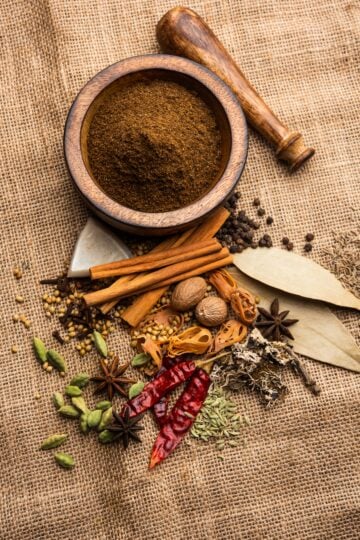
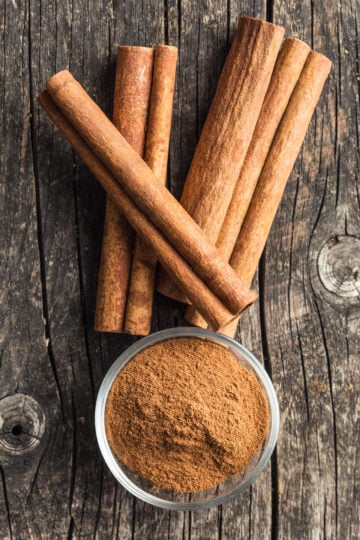
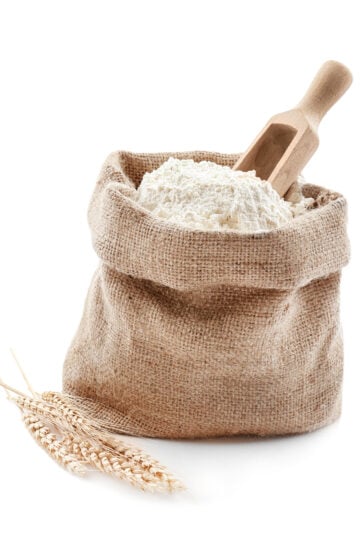
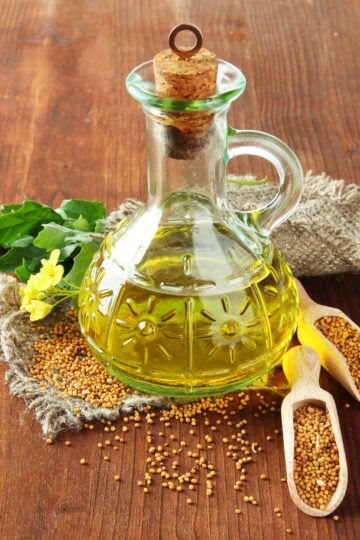
Have a question or something to share? Leave a comment below!